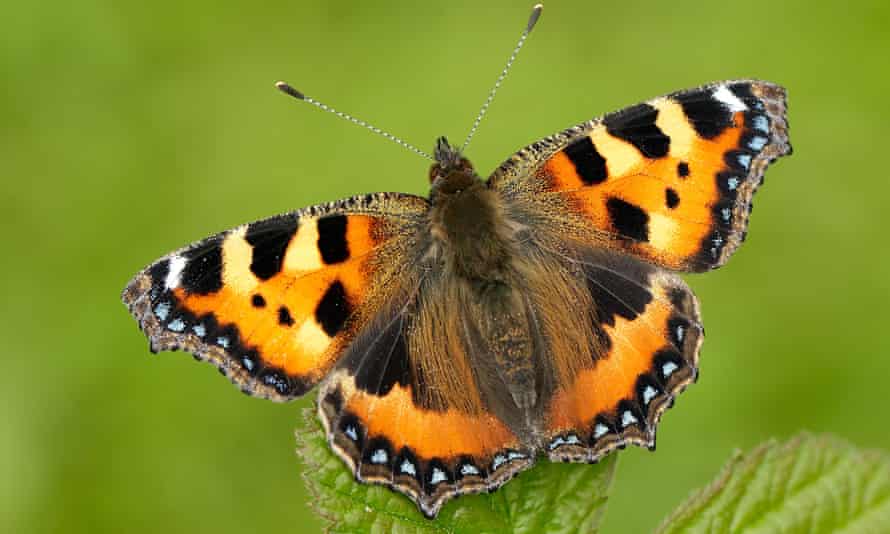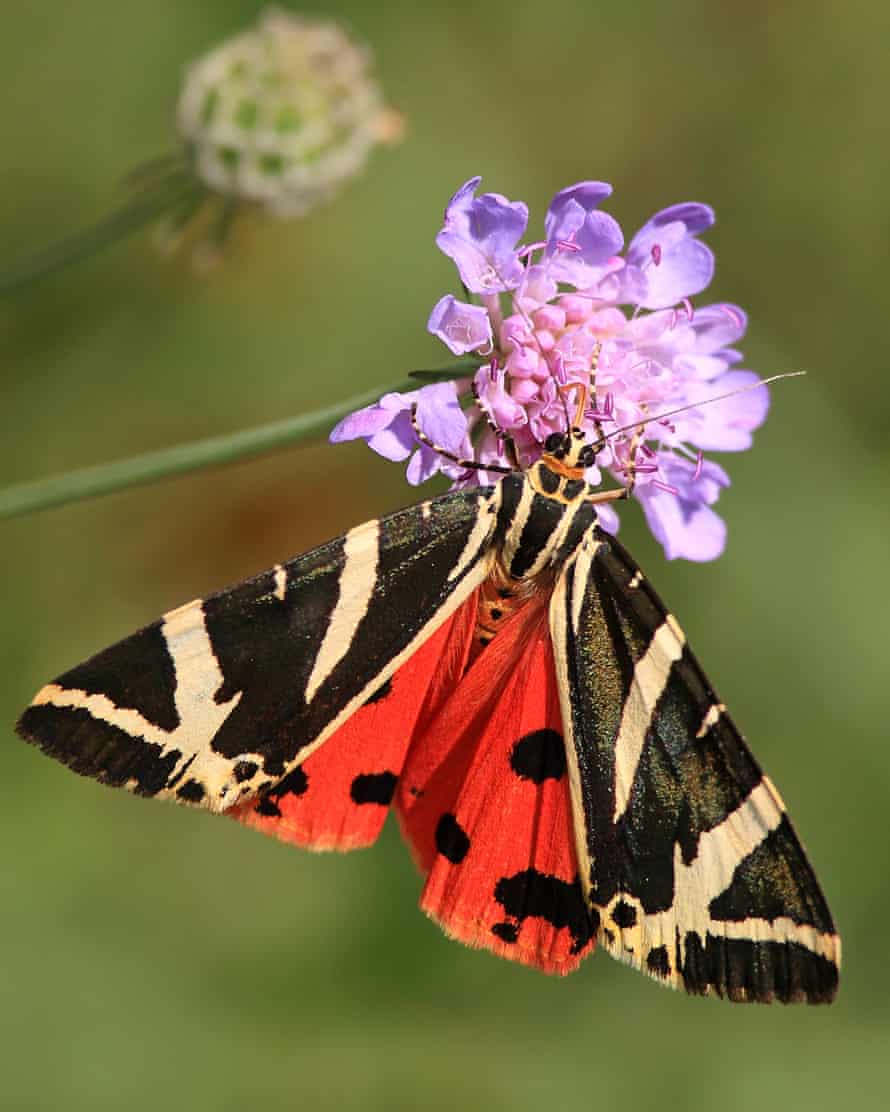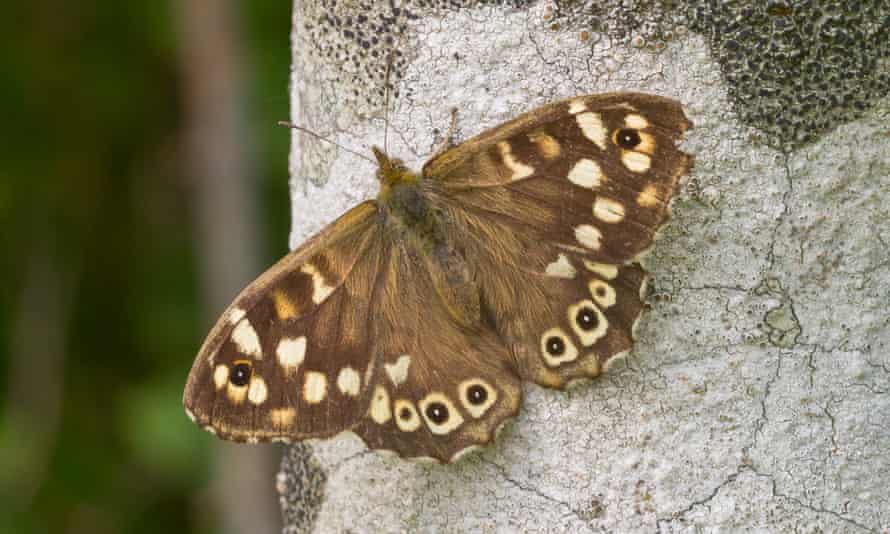‘A tale of woe’: UK butterfly numbers hit by cold, wet spring
Public urged to join world’s biggest butterfly count to help collect data on impacts of climate crisis

Butterflies across the UK have been hit hard by unseasonably cold and wet spring weather, conservationists have warned.
April was the sunniest on record but it also had a record number of frosts followed by the wettest May for England in 54 years. Native butterflies such as the small tortoiseshell, large white, and red admiral have been badly affected, with numbers down compared with 10-year averages, according to the wildlife charity Butterfly Conservation.
Cold weather delays butterflies’ emergence and they do not do well in the rain because it interferes with their flight. “They’re sort of solar-powered,” said Zoe Randle, senior surveys officer at Butterfly Conservation. “They need sunshine to warm their bodies up so they’ve got enough energy to fly around, feed and find mates.”

It is not clear if the cold spring delayed the emergence of these species or if it is symptomatic of a broader decline. Climate breakdown increases the likelihood of extreme weather events, and their increased regularity does not give butterflies a chance to recover from one year to the next. Populations of the comma and green-veined white also appear to be very low.
“It’s a tale of woe,” said Randle. “A lot of our wider countryside species are declining, and we really don’t understand why. There’ll be a cocktail of drivers, so it’s habitat loss, agricultural intensification, climate change as well as development.”
Researchers looked at spring data from the UK Butterfly Monitoring Scheme and compared it against the average counts for 2010-19. They are now urging the public to help scientists build on this bedrock of data by taking part in the annual UK-wide Big Butterfly Count, the world’s biggest survey of butterflies.
The three-week citizen science event is open to everyone living anywhere in the country and takes place from 16 July to 8 August. Participants need to spend 15 minutes in an outdoor space counting common butterflies and day-flying moths they see and recording their findings on the Big Butterfly Count app. Free identification sheets or an ID app are available.

A fall in butterfly numbers is often an early warning of larger ecosystem decline because the insects react quickly to changes in the environment. The wildlife TV presenter Chris Packham, who is vice-president of Butterfly Conservation, said recording butterflies was a small but crucial contribution everyone could make.
“Because butterflies and moths make excellent indicators of the impacts of climate change and other human environmental factors, collecting data on their numbers is really important,” he said. “So something as simple as recording a butterfly spotted in your garden, at your local park or on your window box can play a part in vital research into a global problem.”
More than 100,000 citizen scientists took part in last year’s count, which is the highest number ever, but worryingly the numbers of butterflies and moths spotted was the lowest since the project began 12 years ago. This could be because the warm spring meant butterflies came out earlier, potentially completing their lifecycle by the time the survey started on 17 July.

About three-quarters of the UK’s resident and regular migrant butterflies have declined in either their numbers or distribution since monitoring began in the 1970s. Although the overall picture is one of loss, species are also being found in new areas, such as the Jersey tiger moth, which was well established along the south coast of England but now appears to be spreading northwards. This is being included in the count of common species for the first time.
There are other success stories. The speckled wood butterfly has seen an 84% increase in abundance since 1976, and the red admiral – which used to be a summer migrant – is now wintering in the UK too due to milder weather, and is doing relatively well. One of Britain’s rarest butterflies, the heath fritillary, was close to extinction in the UK but numbers are increasing thanks to habitat restoration efforts over the past 20 years.
The launch of the 2021 Big Butterfly Count takes place today at Winchester Science Centre.
Big Butterfly Count 2020 top 10
1. Large white (+44%)
2. Small white (+7%)
3. Gatekeeper (-14%)
4. Peacock (-42%)
5. Meadow brown (-2%)
6. Red admiral (-33%)
7. Small tortoiseshell (-41%)
8. Common blue (+9%)
9. Ringlet (-18%)
10. Comma (-29%)
Find more age of extinction coverage here, and follow biodiversity reporters Phoebe Weston and Patrick Greenfield on Twitter for all the latest news and features
